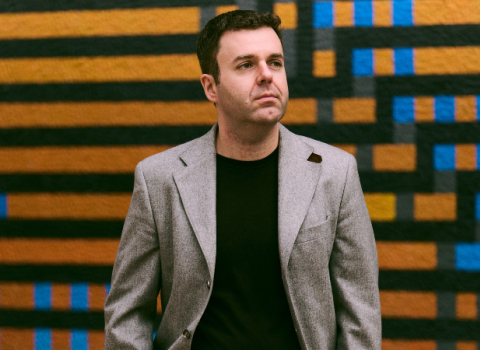Germany’s leading technology translation body says European Institute of Innovation & Technology ‘fails to provide added value’

Photo credits: Fraunhofer IOF
One of the world’s leading applied research organisations says the European Institute of Innovation and Technology (EIT) is “overly complex, costly and non-transparent” and should be “discontinued”.
In a scathing paper, Germany’s Fraunhofer-Gesellschaft argues that EIT “fails to provide added value to Europe’s innovation ecosystems and its industrial competitiveness” and points to the high administrative burden of participating in EIT activities, a lack of involvement of universities and research institutes and concerns over EIT’s financial sustainability.
Fraunhofer’s conclusion adds to the pressure on EIT after both Denmark and Latvia issued calls for it to be discontinued in the next Framework research programme, FP10.
The latest criticisms have added weight, given Fraunhofer’s long heritage in carrying out the applied research needed to translate fundamental science to market, and the fact that its member institutions have direct experience as active participants in EIT programmes. The call to discontinue the EIT comes after wide consultation among these members.
Fraunhofer’s core justification is that other EU funding schemes, such as the large collaborative projects funded under Horizon Europe pillar 2, or the European Innovation Council, are more adept at doing what EIT does.
In addition, with pressure mounting on the EU’s overall budget, Fraunhofer believes close scrutiny of how the research and innovation budget is spent is vital. Like many other research organisations, Fraunhofer is calling for FP10 to have a €200 billion budget, more than twice that of Horizon Europe, but the German organisation still does not think the EIT would offer a positive return on investment within that budget.
The paper says resources currently directed to the EIT should to be put back into FP10, in particular to support the European Innovation Council (EIC), the EU’s main start-up fund.
Not surprisingly, EIT has a different perspective. “EIT is needed now more than ever,” a spokesperson told Science|Business in response to the calls for it to be discontinued. “Innovation happens when you put different actors around the same table, and this is exactly what the EIT does, bringing together research, business and education.”
EIT says it welcomes constructive and factual feedback from its stakeholders, including those that call for more simplification, and it has already made moves to address this, for example by introducing multi-annual grants to maximise flexibility.
“We recognise that some feedback is rooted in misunderstandings, to which we will respond directly and aim for a dialogue on an individual basis,” the spokesperson said. “It is important to recall that the EIT model is unique as it aims at impact on societal challenges, and not to maximise the award of grants to individual partners. We build on the model of open collaboration and open partnerships to attract the best ideas, and when creating innovation ecosystems, the EIT’s funding must leverage private funding.”
Entrepreneurial education
Latvia made its call for EIT to be axed in a position paper on FP10 published last week, which says EIT’s innovation-related activities should be integrated into the European Innovation Council (EIC), while entrepreneurial education and training schemes, such as the Higher Education Initiative and the EIT Label could continue under Erasmus+.
The EIT headquarters in Budapest could be used by the EIC and EIT’s knowledge and innovation communities phased out gradually, “in accordance with adopted schedules for financial sustainability and progress made in attracting external financing, ensuring that expertise isn’t lost.”
In response specifically to the Latvian government’s paper, the EIT spokesperson said the comments are “a surprise”, given the EIT “stands out” in support of the EU’s 13 newer member states that tend to have weaker research and innovationecosystems. “In the big picture, thanks to our Regional Innovation Scheme that offers tailor-made support to different regional needs, the EIT has one of the most impressive track records in all of Horizon Europe,” EIT claims.
“For example, EU13 countries won 13% of total EIT grant funding in 2021-2022, compared to 4.85% of Horizon Europe funding. Zooming in on Latvia, [it] received 0.2% of the total Horizon Europe grants (2021-2023) versus 1.2% of EIT grants (2021-2022).”
Fraunhofer’s issues with the EIT
Fraunhofer operates 76 institutes and research facilities throughout Germany and has an annual research budget of roughly €3 billion. Since 1949 it has acted as a bridge between basic research and innovation, working to spur new business ventures based on research results. Many of its goals, such as supporting the commercialisation of research, are similar to EIT’s.
The critique of EIT points to four shortcomings. The first is the financial and administrative burden for beneficiaries of the EIT. Fraunhofer argues that participation in EIT Knowledge and Innovation Communities (KIC) involves, “Substantial financial contributions from members that do not directly benefit from their efforts in creating and developing the KIC.”
The administrative burden for beneficiaries of EIT funding is excessively high, and consortium partners in KICs have to contribute significant financial and personnel resources to their operation.
At the same time, organisations such as universities, research organisations and companies that should be key stakeholders struggle to participate in the KICs because of financial and administrative overheads. This leaves start-ups as the main beneficiaries, and Fraunhofer suggests the EIC would provide a better support system for these companies.
In addition, the governance and structure of the EIT is complex and “creates a lack of transparency”, while at the same time the KICs lack financial sustainability.
KICs are meant to become financially independent of EIT after 15 years. The first three, EIT Climate-KIC, EIT InnoEnergy and EIT Digital, set up in 2010, have now achieved this, EIT’s director said in February this year. Their EIT funding runs out at the end of this year, although discussions are underway about a possible extension.
Finally, Fraunhofer argues that the KICs are established in areas where research and innovation ecosystems are up and running, and many of the EITs activities overlap with other initiatives or programmes.
Fraunhofer is not the only research performing research performing body to have criticised EIT. The League of European Research Universities, while stopping short of calling for the EIT to be discontinued, has also called for wide-ranging reforms. In its recently published position paper on FP10, it says that no new KICs should be created without clear plans for financial sustainability, notes that participation in KICs is “very complicated” and that EIT processes “need to be simplified and the rules made more stable”.
The Guild, representing a group of research-intensive European universities, also expressed concerns about EIT in its FP10 position paper, saying the KICs prioritise business activities over education-related activities.
“While acknowledging the autonomy of each KIC, we strongly recommend that the European Commission ensure that they operate in accordance with their primary objective and bring education, research and innovation closer to each other,” the Guild said. “Otherwise, the added value and therefore relevance of their financing through FP10 will be severely diminished.”
At a Science|Business conference in February, Marc Lemaître, the Commission’s director general for research and innovation, appeared receptive to the suggestion that EIT should be merged with the EIC.
Portuguese MEP Maria da Graça Carvalho – one of the legislators behind the EIT – agreed change is needed, saying, “For example with the EIC and the EIT – and I defend the two – probably they can have common structures, probably don’t need to be different two agencies.”





 A unique international forum for public research organisations and companies to connect their external engagement with strategic interests around their R&D system.
A unique international forum for public research organisations and companies to connect their external engagement with strategic interests around their R&D system.